 W
WPersian literature comprises oral compositions and written texts in the Persian language and is one of the world's oldest literatures. It spans over two-and-a-half millennia. Its sources have been within Greater Iran including present-day Iran, Iraq, Afghanistan, the Caucasus, and Turkey, regions of Central Asia and South Asia where the Persian language has historically been either the native or official language. For example, Rumi, one of the best-loved Persian poets, born in Balkh or Wakhsh, wrote in Persian and lived in Konya, at that time the capital of the Seljuks in Anatolia. The Ghaznavids conquered large territories in Central and South Asia and adopted Persian as their court language. There is thus Persian literature from Iran, Mesopotamia, Azerbaijan, the wider Caucasus, Turkey, Pakistan, Bangladesh, India, Tajikistan and other parts of Central Asia. Not all Persian literature is written in Persian, as some consider works written by ethnic Persians or Iranians in other languages, such as Greek and Arabic, to be included. At the same time, not all literature written in Persian is written by ethnic Persians or Iranians, as Turkic, Caucasian, and Indic poets and writers have also used the Persian language in the environment of Persianate cultures.
 W
WHis name is given as Jamāl-al-Din Moḥammad Sidi in the early sources. He lived from 963 AH-999 AH; c. 1556-1590 CE; known by his pen-name Urfi, or Orfi or Urfi Shirazi, was a 16th-century Persian poet.
 W
WAbū Manṣūr Muḥammad b. Muḥammad b. Maḥmūd as-Samarḳandī al-ḥanafi, often referred to as Abū Manṣūr al-Māturīdī for short, or reverently as Imam Māturīdī by Sunni Muslims, was a Persian Sunni Hanafi jurist, theologian, and scriptural exegete from ninth-century Samarkand who became the eponymous codifier of one of the principal orthodox schools of Sunni theology, the Maturidi school, which became the dominant theological school for Sunni Muslims in Central Asia and later enjoyed a preeminent status as the school of choice for both the Ottoman Empire and the Mughal Empire.
 W
WThe Academy of Persian Language and Literature (APLL) is the regulatory body for the Persian language, headquartered in Tehran, Iran. Formerly known as the Academy of Iran, it was founded on May 20, 1935 by the initiative of Reza Shah, the founder of Pahlavi dynasty.
 W
WʿAjā'ib al-makhlūqāt wa gharā'ib al-mawjūdāt, The Wonders of Creation is a book in Arabic and an important work of cosmography by Zakariya al-Qazwini, who was born in Qazwin in the year 600 AH/1203 AD.
 W
WIdris Bitlisi, sometimes spelled Idris Bidlisi, Idris-i Bitlisi, or Idris-i Bidlisi, and fully Mevlana Hakimeddin İdris Mevlana Hüsameddin Ali-ül Bitlisi, was an Ottoman Kurdish religious scholar and administrator.
 W
WThe parable of the blind men and an elephant originated in the ancient Indian subcontinent, from where it has been widely diffused. It is a story of a group of blind men who have never come across an elephant before and who learn and conceptualize what the elephant is like by touching it. Each blind man feels a different part of the elephant's body, but only one part, such as the side or the tusk. They then describe the elephant based on their limited experience and their descriptions of the elephant are different from each other. In some versions, they come to suspect that the other person is dishonest and they come to blows. The moral of the parable is that humans have a tendency to claim absolute truth based on their limited, subjective experience as they ignore other people's limited, subjective experiences which may be equally true.
 W
WThe Blind Owl is Sadegh Hedayat's magnum opus and a major literary work of 20th century Iran. Written in Persian, it tells the story of an unnamed pen case painter, the narrator, who sees in his macabre, feverish nightmares that "the presence of death annihilates all that is imaginary. We are the offspring of death and death delivers us from the tantalizing, fraudulent attractions of life; it is death that beckons us from the depths of life. If at times we come to a halt, we do so to hear the call of death... Throughout our lives, the finger of death points at us." The narrator addresses his murderous confessions to the shadow on his wall resembling an owl. His confessions do not follow a linear progression of events and often repeat and layer themselves thematically, thus lending to the open-ended nature of interpretation of the story.
 W
WCraposyncrasies or Doozakhrafat is a book by Sorush Pakzad of satirical pieces in Persian, which were posted on his personal blog before publication. The book includes 107 stories about gods, prophets, and angels and was published in February 2012 by H&S Media. The publisher included the book among its top-sellers in 2014.
The Cypress of Kashmar was sacred to followers of Zoroastrianism. According to the Iranian epic Shahnameh, the tree had grown from a branch Zoroaster had carried away from Paradise and which he planted in honor of King Vishtaspa's conversion to Zoroastrianism in Kashmar. In 861 AD, Abbasid Caliph al-Mutawakkil ordered the tree be felled and transported to his capital in Samarra where its wood would be used as beams for his new palace. The palace and its spiral minaret still stand today.
 W
WIn the Persian epic of Shahnameh Div-e Sepid, is the chieftain of the Divs (demons) of Mazandaran. He is a huge being. He possesses great physical strength and is skilled in sorcery and necromancy. He destroys the army of Kay Kavus by conjuring a dark storm of hail, boulders, and tree trunks using his magical skills. He then captures Kay Kavus, his commanders, and paladins; blinds them, and imprisons them in a dungeon. The greatest Persian mythical hero Rostam undertakes his "Seven Labors" to free his sovereign. At the end, Rostam slays Div-e Sepid and uses his heart and blood to cure the blindness of the king and the captured Persian heroes. Rostam also takes the Div's head as a helmet and is often pictured wearing it.
 W
WFalnama is a book of omens used by fortune tellers in Iran and Turkey during the 16th and 17th centuries. Individuals seeking insight into the future would engage in a series of purification rituals, turn to a random page in the Falnama, and interpret the text and drawings thereon for good or ill. Falnama manuscripts were primarily created during the 16th and 17th centuries as the Islamic calendar was approaching the year 1000.
 W
WFarhād is a famous character in Persian literature and Persian mythology. The story of his love with Shirin is one of the most famous love stories in Persian culture. The most important work about him is Khosrow and Shirin by Persian poet Nezami Ganjavi, but the story was well known in Persian literature long before Nezami. Ferdowsi also narrates the story of Khosrow and Shirin, but in his version, Farhād only plays a minor part. The story of Farhād has Parthian origins. Some writers such as the unknown writer of Mojmal al-tawārīḵ wa’l-qeṣāṣ refer to Farhad as a Kayanian figure. Balʿamī is one of the first writers that refer to Farhad as a Sasanian figure.
 W
WFereydun or Fereidun, or Afrīdūn, is an Iranian mythical king and hero from the Pishdadian dynasty. He is known as an emblem of victory, justice, and generosity in Persian literature.
 W
WThe ghazal is a form of amatory poem or ode, originating in Arabic poetry. A ghazal may be understood as a poetic expression of both the pain of loss or separation and the beauty of love in spite of that pain.
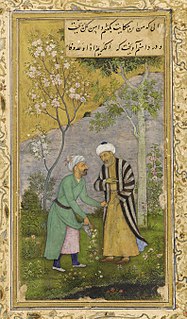 W
WThe Golestan is a landmark of Persian literature, perhaps its single most influential work of prose. Written in 1258 CE, it is one of two major works of the Persian poet Sa'di, considered one of the greatest medieval Persian poets. It is also one of his most popular books, and has proved deeply influential in the West as well as the East. The Golestan is a collection of poems and stories, just as a flower-garden is a collection of flowers. It is widely quoted as a source of wisdom. The well-known aphorism still frequently repeated in the western world, about being sad because one has no shoes until one meets the man who has no feet "whereupon I thanked Providence for its bounty to myself" is from the Golestan.
 W
WHaftvād is a legendary character whose story appears alongside accounts of the rise of Ardashir I, the founder of the Sassanid dynasty of Persia, in the third century C.E. Haftvād is mentioned in various sources, most notably the Shahnameh of Abu'l-Qāsim Ferdowsī Tūsī.
 W
WRoya Hakakian is a poet, journalist and writer. Born in Iran, she came to the United States as a refugee and is now a naturalized citizen. She is the author of several books, including the 2011 Assassins of the Turquoise Palace and the upcoming A Beginner's Guide to America.
 W
WRezā Qoli Khān Hedāyat was a Persian writer and poet, and tutor of Mozaffar al-Din Shah Qajar.
 W
WHidayat al-Mutaʽallemin fi al-Ṭibb is a medical guide written in Persian. The author is Abu Bakr Rabee Ibn Ahmad Al-Akhawyni Bokhari.
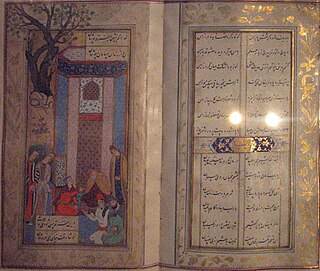 W
WĪhām in Persian, Urdu, Kurdish and Arabic poetry is a literary device in which an author uses a word, or an arrangement of words, that can be read in several ways. Each of the meanings may be logically sound, equally true and intended.
 W
WIraj is seventh Shah of the Pishdadian dynasty of Shahnameh. Based on Iranian mythology, he is the youngest son of Fereydun. In the Avestan legends, Pahlavi literature, Sasanian-based Persian sources, some Arabic sources, and particularly in Shahnameh, he is considered the name-giver of the Iranian nation, the ancestor of their royal houses, and a paragon of those slain in defense of just causes.
 W
WThe Jāmiʿ al-tawārīkh, is a work of literature and history, produced in the Mongol Ilkhanate. Written by Rashid-al-Din Hamadani (1247–1318) at the start of the 14th century, the breadth of coverage of the work has caused it to be called "the first world history". It was in three volumes and published in Arabic and Persian versions. The surviving portions total approximately 400 pages of the original work. The work describes cultures and major events in world history from China to Europe; in addition, it covers Mongol history, as a way of establishing their cultural legacy.
 W
WKalīla wa-Dimna is a book containing a collection of fables. It was translated into Arabic in the Abbasid age specifically in the second hijri century by Abdullah ibn al-Muqaffa using his own writing style. A lot of researchers have agreed that the book goes back to Indian roots, and was based on the Sanskrit text Pañcatantra. Then it was translated into Pahlavi language at the beginning of the sixth Gregorian century by orders from Khosrow I.
 W
WKâtip Çelebi, or Haji Khalifa, is celebrated in the countries of the Islamic East as the author of the Kaşf az-Zunūn. This bibliographic encyclopedia of books and sciences was based on the Miftāḥ al-Saʿāda wa-miṣbāḥ al-Siyādah by the c.16th Ottoman historian, Taşköprüzade. However the Kaşf substantially enlarges it, cataloging titles of about 15,000 book, about 9,500 names of authors, and about 300 sciences and arts. At the age of twenty-five in 1633 while in Aleppo he began compiling and composing the work that occupied him for the next twenty years, until its completion in 1652. An account of this is contained in his book "Mizan al-Haq", where he writes: "On my stay in Aleppo, I would visit bookshops to browse, and then when I had returned to Istanbul and came into some money, I began acquiring books and letters. In 1638, a relative died and left me a more substantial legacy, which was spent in large part collecting the great works which I had seen in Aleppo, Istanbul and in the public repositories of the Sultanate of Oman".
 W
WKimiya-yi Sa'ādat was a book written by Abū Ḥāmid Muḥammad ibn Muḥammad al-Ghazālī, a Persian theologian, philosopher, and prolific Sunni Muslim author regarded as one of the greatest systematic thinkers of Islam. The Kimiya-yi Sa'ādat was written towards the end of his life shortly before 499 AH/1105 AD. During the time before it was written the Muslim world was considered to be in a state of political as well as intellectual unrest. Al-Ghazālī, noted that there were constant disputes about the role of philosophy and scholastic theology, and that Sufis became chastised for their neglect of the ritual obligations of Islam. Upon its release, the Kimiya-yi sa'ādat allowed al-Ghazali to considerably cut the tensions between the scholars and mystics. Kimiya-yi sa'ādat emphasized importance of observing the ritual requirements of Islam, the actions that would lead to salvation, and avoidance of sin. The factor that set the Kimiya-yi sa'ādat apart from other theological works at the time was its mystical emphasis on self-discipline and asceticism.
 W
WKulliyat is a collection of the poetry of any one poet.
 W
WLayla & Majnun is an old story of Arabic origin, about the 7th-century Najdi Bedouin poet Qays ibn al-Mulawwah and his ladylove Layla bint Mahdi.
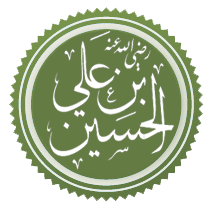 W
WA marsiya is an elegiac poem written to commemorate the martyrdom and valour of Hussain ibn Ali and his comrades of the Karbala. Marsiyas are essentially religious.
 W
WMojmal al-Tawarikh wa al-Qasas was a book written in Ghaznavid Persia.
 W
WNasreddin or Nasreddin Hodja or Mullah Nasreddin Hooja or Mullah Nasruddin (1208-1285) was a Seljuq satirist, born in Hortu Village in Sivrihisar, Eskişehir Province, present-day Turkey and died in 13th century in Akşehir, near Konya, a capital of the Seljuk Sultanate of Rum, in today's Turkey. He is considered a philosopher, Sufi, and wise man, remembered for his funny stories and anecdotes. He appears in thousands of stories, sometimes witty, sometimes wise, but often, too, a fool or the butt of a joke. A Nasreddin story usually has a subtle humour and a pedagogic nature. The International Nasreddin Hodja festival is celebrated between 5 and 10 July in his hometown every year.
 W
W'Ali-Shir Nava'i, also known as Nizām-al-Din ʿAli-Shir Herawī, was a Turkic poet, writer, politician, linguist, Hanafi Maturidi mystic and painter who was the greatest representative of Chagatai literature.
 W
WAhmad NikTalab was an Iranian poet, author, and linguist.
 W
WOne Thousand and One Nights is a collection of Middle Eastern folk tales compiled in Arabic during the Islamic Golden Age. It is often known in English as the Arabian Nights, from the first English-language edition, which rendered the title as The Arabian Nights' Entertainment.
 W
WThe Packard Humanities Institute (PHI) is a non-profit foundation, established in 1987, and located in Los Altos, California, which funds projects in a wide range of conservation concerns in the fields of archaeology, music, film preservation, and historic conservation, plus Greek epigraphy, with an aim to create tools for basic research in the Humanities.
 W
WThe Panchatantra is an ancient Indian collection of interrelated animal fables in Sanskrit verse and prose, arranged within a frame story. The surviving work is dated to roughly 200 BCE – 300 CE, based on older oral tradition. The text's author has been attributed to Vishnu Sharma in some recensions and Vasubhaga in others, both of which may be pen names. It is classical literature in a Hindu text, and based on older oral traditions with "animal fables that are as old as we are able to imagine".
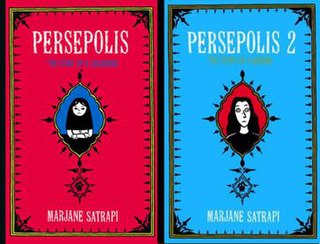 W
WPersepolis is an autobiographical series of bande dessinées by Marjane Satrapi that depicts her childhood up to her early adult years in Iran and Austria during and after the Islamic Revolution. The title Persepolis is a reference to the ancient capital of the Persian Empire. Originally published in French, the graphic memoir has been translated to many other languages, including English, Spanish, Catalan, Portuguese, Italian, Greek, Swedish, Finnish, Georgian, Chinese and others. As of 2018, it has sold more than 2 million copies worldwide. Persepolis was written in 2000 and Persepolis 2 was written in 2004.
 W
WQabus nama or Qabus nameh, Mirror of Princes, is a major work of Persian literature, from the eleventh century.
 W
WA periplus, or periplous, is a manuscript document that lists the ports and coastal landmarks, in order and with approximate intervening distances, that the captain of a vessel could expect to find along a shore. In that sense, the periplus was a type of log and served the same purpose as the later Roman itinerarium of road stops. However, the Greek navigators added various notes, which, if they were professional geographers, as many were, became part of their own additions to Greek geography.
 W
WRubāʿī is the term for a quatrain, a poem or a verse of a poem consisting of four lines. It refers specifically to a form of Persian poetry, or its derivative form in English and other languages.
 W
WRudāba or Rudābeh is a Persian mythological female figure in Ferdowsi's epic Shahnameh. She is the princess of Kabul, daughter of Mehrab Kaboli and Sindukht, and later she becomes married to Zal, as they become lovers. They had two children, including Rostam, the main hero of the Shahnameh.
The Sad-dar or Saddar, literally "Hundred Doors", is a Persian book about Zoroastrianism. The hundred chapters are guidelines that Zoroastrians should follow.
 W
WThe Shahr Ashob (Persian: شهر آشوب; literary written as Shahr-e-Ashob, sometimes spelled Shahar-i-Ashob, is an ancient Urdu poetic genre in South Asia with its roots in lamented classical Urdu poetry. It was existed and widely used by the poets between the 16th and 19th centuries during the Mughal Empire. Ashob remained an historical genre in Persian, Urdu and Turkish literature used by the writers, predominantly by the Mughal poets to express their anguish and sorrows over political and social shifts.
 W
W"Sheikh San'Aan" or "San'Aan" is the title of a Persian mystical poem written by the Persian Sufi poet Farid ud-Din Attar. "Sheikh San'Aan" is the longest story in the book The Conference of the Birds.
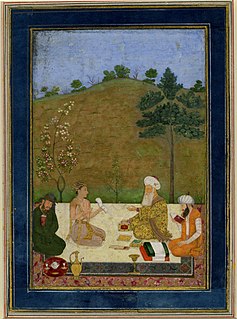 W
WThe Sirr-i-Akbar is a version of the Upanishads authored by the Mughal-Shahzada, Dara Shukoh, translated from Sanskrit into Persian, c. 1657. After years of Sufi learning, Dara Shukoh sought to uncover a common mystical language between Islam and Hinduism, boldly stating that the Kitab al-Maknun, or "Hidden Book", mentioned in the Qur'an is none other than the Upanishads.
 W
WThe Süleymannâme is an illustration of Suleiman the Magnificent's life and achievements. In 65 scenes the miniature paintings are decorated with gold, depicting battles, receptions, hunts and sieges. Written by Fethullah Arifi Çelebi in Persian verse, and illustrated by five unnamed artists, the Süleymannâme was the fifth volume of the first illustrated history of the Ottoman dynasty. It was written in the manner of the Iranian Shahnameh epic. The original version of the Süleymannâme lies in the Topkapi Palace Museum in Istanbul and there is another manuscript in Astan Quds Razavi, the manuscript numbered as manuscript 4249 in Astan Quds Razavi library.
 W
WTahmina or Tahmineh is a female character in the story Rostam and Sohrab, part of the 10th-century Persian epic of Shahnameh. Her name is mentioned as the wife of Rostam and as the daughter of Samanganshah, the sovereign of Samangan.
 W
WMuhammad Ibn Abdullah Taleb Amoli known as Talib Amuli and Talib Amoli Iranian Tabari poet was of the early 17th century. He was the poet laureate of the Mughal emperor Jahangir from 1629 till his death. His poetry is in the “Indian Style” of Persian language. A poetry collection (divan) and the poem Talib and Zohre are the works that are left of him today. The fact that he read mathematics, geometry and philosophy in his poems reveals that he received a good education. He is also known to be a good calligrapher.
 W
WMaqasid al Falasifa, or The Aims of the Philosophers was written by Al-Ghazali. Influenced by Avicenna's works, he wrote this book presenting the basic theories of Philosophy. In this book, he explained in detail about what philosophy is and described basic entities like judgement, concept, premise and logic. Al-Ghazali stated that one must be well versed in the ideas of the philosophers before setting out to refute their ideas. He also stated that he did not find other branches of philosophy including physics, logic, astronomy or mathematics problematic. After writing Maqasid al Falasifa, he wrote another book Tahāfut al-Falāsifa, criticizing the Avicennian school of early Islamic philosophy.
 W
WBidayat al Hidayah was written by Abū Ḥāmid Muḥammad ibn Muḥammad al-Ghazālī during his last days. It is a guidebook describing the principles of getting guidance through taqwa. The manual is concise and arranged in the form of a daily programme. The book contains three sections, which are on the obedience, refraining from disobedience, and the etiquette of companionship with the God and His creation. It serves as a preface to his major texts.
 W
WAl-Iqtisād fī al-iʿtiqad, or The Moderation in Belief is a major theological work by Abū Ḥāmid Muḥammad ibn Muḥammad al-Ghazali. George Hourani indicated that the Iqtisad and Mizan al-amal were completed before or during Ghazali's crisis of faith. It led him to abandon his notorious post at the Niẓamiyya school in Baghdad and enter the path of Tasawwuf. In it, he offers what scholars consider as the best defence of the Ash'arite school of Islamic theology. He also expressed strong reservations about a theology based on taqlid and marked by polemics. In this book, Ghazali makes an attempt to respond to the extreme literalists and the Muʿtazilites. It is the balance between reason and revelation that led to the title of book The Moderation in Belief.
 W
WIḥyā′ ‘Ulūm al-Dīn is an 11th-century book written by Abū Ḥāmid Muḥammad ibn Muḥammad al-Ghazali. The book was composed in Arabic and was based on personal religious experience. It is regarded as one of his chief works and a classic introduction to the pious muslim's way to God. Originally spanning over 40 volumes, it deals with the principles and practices of Islam and demonstrates how these can be made the basis of a reflective religious life, thereby attaining the higher stages of Sufism. Some consider Kimiyā-ye Sa'ādat as a rewrite of this work, which is a common misconception. Kimyā-ye Sa'ādat is shorter than this, however Ghazali said that he wrote the former to reflect the nature of the latter and a few of his other theological writings.
 W
WWhite Elephant was mentioned in the Shahnameh at the time of Zāl and the tribe in Zablian was caring for it. At this time, Rostam was still a teenager and had not participated in any wars. Rostam's first courage was to kill the white elephant.
 W
WZakhireye Khwarazmshahi (Persian: ذخیرهٔ خوارزمشاهی Zakhīra-i Khwârazmshâhī, "Treasure dedicated to the king of Khwarazm"), is a Persian medical encyclopedia written by the Persian, Ismail Gorgani (1040-1136) in 1110.
 W
W W
W W
W